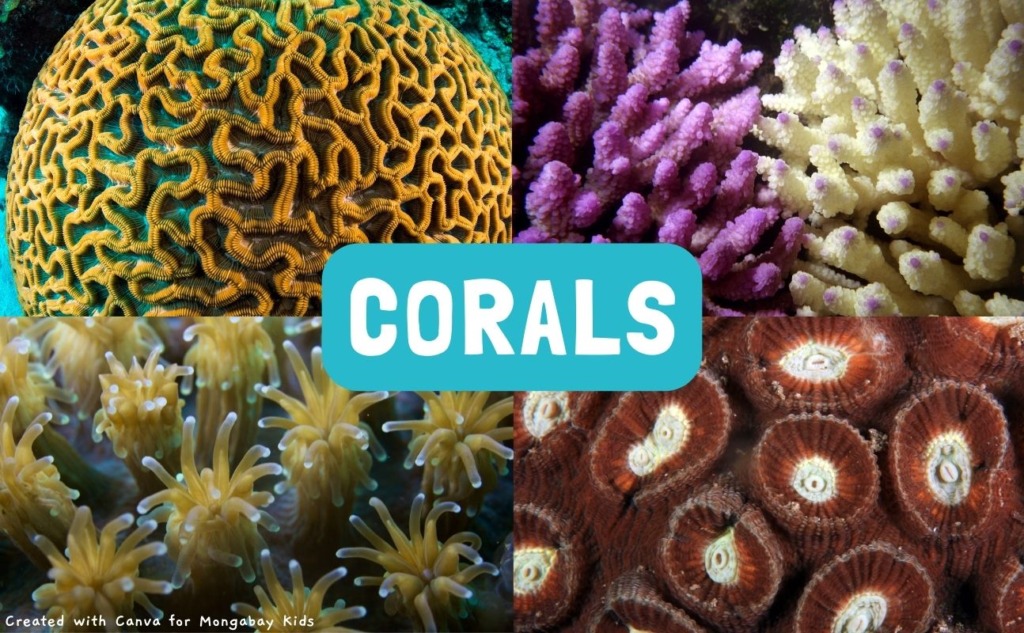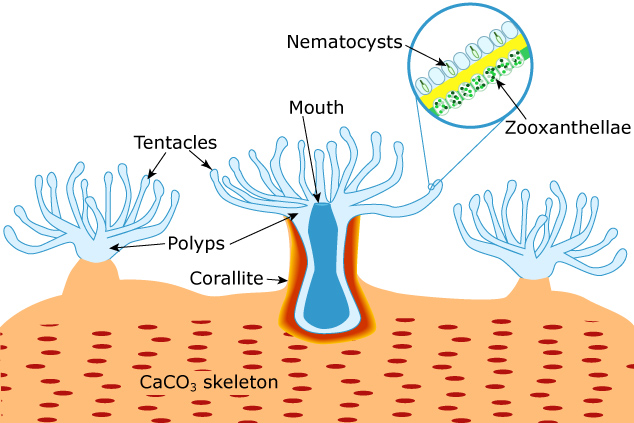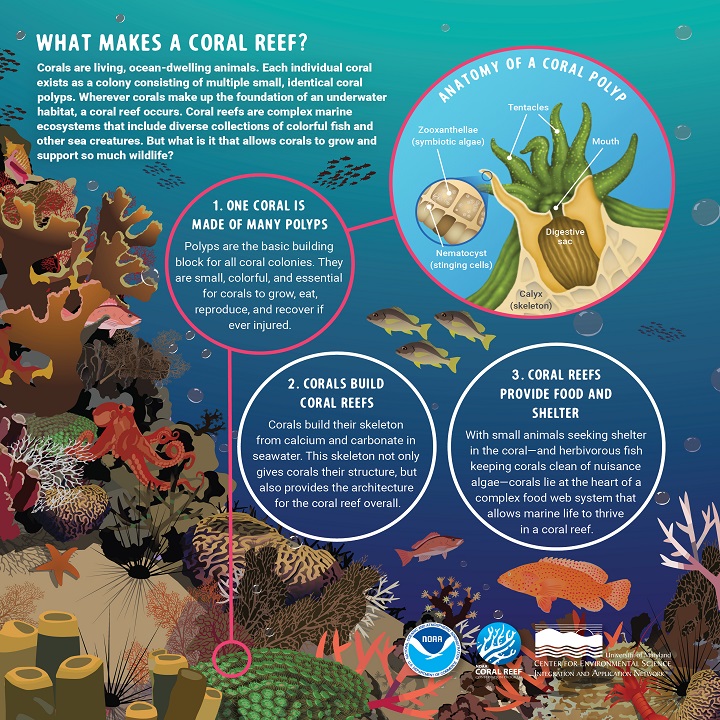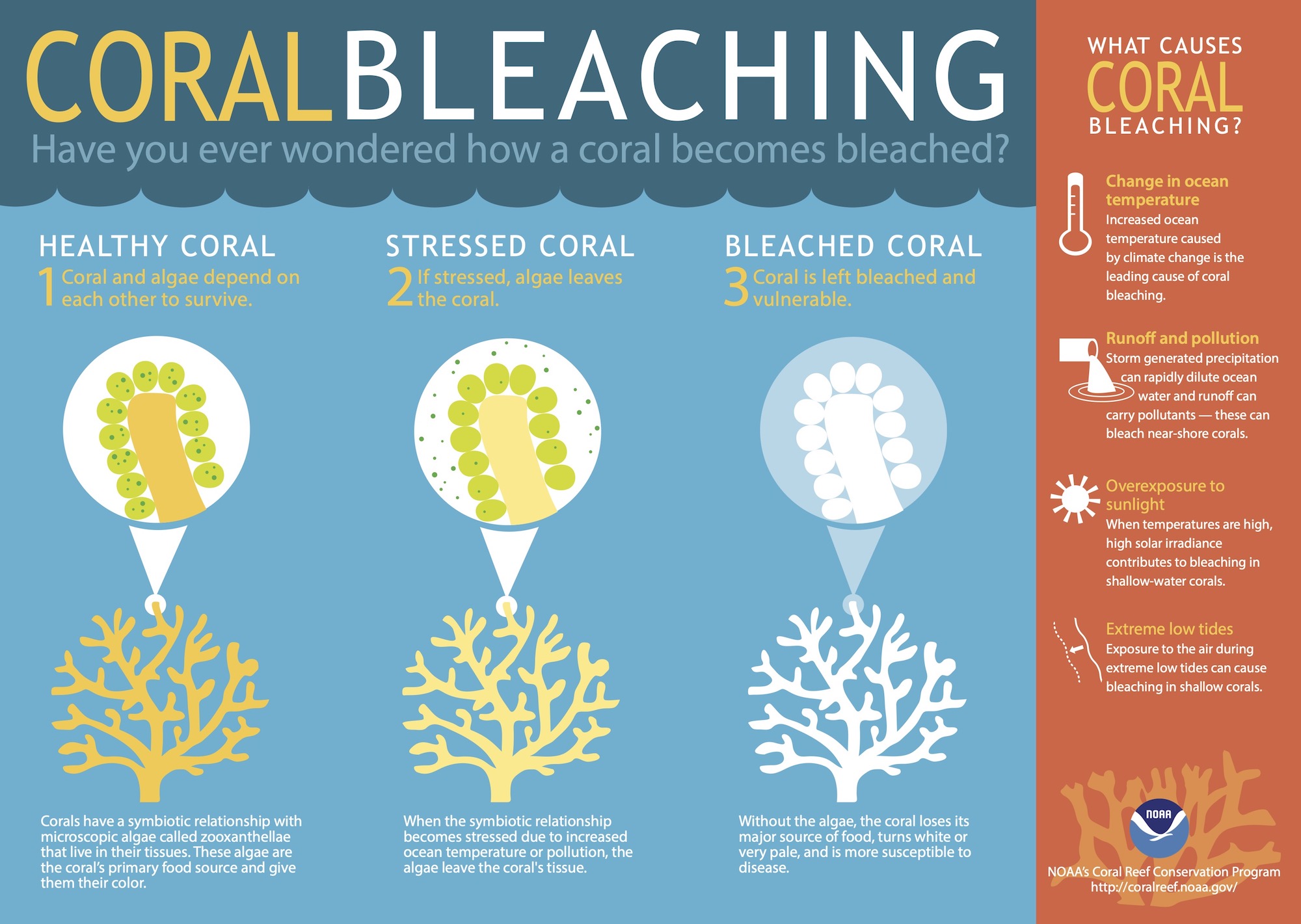Exciting news! Scientists working on reefs in the Indian Ocean have discovered that nutrients from seabird poop help corals grow.
What are coral reefs and how do they form?
Coral reefs might look like they are some kind of stony plant, but they are actually made up of colonies of tiny animals called coral polyps. Corals are invertebrate animals related to sea anemones and sea jellies. Some corals live in the deep sea and others live in large reefs in warm, shallow waters.


Hard corals extract a chemical compound called calcium carbonate from ocean water to build a hard shell-like structure around themselves. (Calcium carbonate is also found in eggshells, chalk, and shellfish.) Thousands of corals live near each other, each building these calcium carbonate structures around themselves.
Over hundreds or thousands of years, new layers of coral live on the calcium carbonate forms of their ancestors and leave their own structures behind, building up a reef. When you see pictures or videos of coral reefs, the living part of the reef is the outer layer of coral.

Coral reefs are extremely important ecologically because they provide homes for more than 25% of Earth’s marine life.
Coral is most active at night. Once a year, when the moon and sea temperatures align, corals spawn en masse. The corals send millions of tiny reproductive cells out into the ocean to connect, develop into larvae, and settle down onto the ocean floor to start a new colony.
After establishing itself, a coral colony can thrive for thousands of years. Oceans are getting warmer though due to climate change. This warming can cause problems for coral survival.
Scientists are working hard to study and protect corals

Casey Benkwitt is a scientist at Lancaster University in England. She studies the lives of coral and the reefs that they build in the ocean. She explains why warming oceans are dangerous for coral: “When oceans get too hot, corals undergo what’s called bleaching, and if it stays too hot for too long, the corals can end up dying, which then affects the fish and everything else that lives on the reef and depends on the corals.”
Coral bleaching is what happens when a coral loses its food source. Each individual coral has microscopic algae living within its body called zooxanthellae. The zooxanthellae create food for the coral through photosynthesis (making sugars from sunlight). The coral provides a home for the algae.
Their relationship is called a symbiotic relationship because both organisms benefit: the coral gets food and the algae gets shelter. When oceans heat up, coral can lose its zooxanthellae. The zooxanthellae provide the color in the body of corals, and when they are lost the coral becomes white and either dies or becomes very ill. This process is called coral bleaching.

Casey has witnessed bleaching events firsthand, and they concern her. She says she wants the public to know that there’s hope.
Seabird poop offers hope to coral scientists
The hope that Casey sees comes from seabirds on islands around the coral reefs.

“Seabird poop is really good for the islands and the coral reefs around them,” Casey explains.
That’s right: poop. Corals absorb nutrients from the poop from seabirds. These nutrients help the coral recover from bleaching caused by the warm oceans.
“Corals grow about twice as fast where there are seabirds present compared to areas where we’ve lost seabirds to invasive rats that eat and destroy their populations,” Casey says.
From 2018–2021, Casey and her team discovered that increased nutrients from seabird poop doubled coral growth rates. The seabird poop nutrients also accelerated the recovery of corals after bleaching events. Within a short period of time, they saw how seabird droppings helped coral reefs become more resilient.
“Most coral reef stories are depressing, and as an ecologist, a lot of the time, the patterns you see are not super clear,” Casey says. “But the nutrients from seabird poop can help coral reefs recover after these big die-offs and grow a lot faster. With coral growth, it’s crazy. Year after year, we are snorkeling underwater and seeing such strong results. It’s really encouraging.”
But like any good scientists, Casey and her team still have a lot of questions.
“We just don’t know a ton about tropical seabirds or their poop,” Casey says. “There’s a lot more going on at the genetic and molecular level … We’re working on it.”
Casey says she knows there are real challenges ahead for coral reefs, but she adds it’s possible to be both informed and optimistic.
“There are things we can do that are pretty easy,” Casey says. “There are coral reefs that are doing well at the moment, and we can keep enhancing things like seabirds that may help them thrive into the future. Not all hope is lost.”
David Brown adapted this story for Mongabay Kids. It is based on an article by Anna Dulisse, published on Mongabay News:
Learning resources on corals for carers & educators:
From NOAA:
- What are coral reefs? (Detailed resource)
- Coral reef ecosystems (Educator page with links to many resources)
- Coral polyps up close (Diagram)
- What is coral bleaching?
- Coral reef activity book
- Virtual dive: Flower Garden Banks National Marine Sanctuary
Earth Lab: educator resources on corals
CAMEL Climate Change Education: What is coral bleaching?
Australian Government /Reef Authority: Great Barrier Reef learning resources
This video from the Australian Broadcasting Corporation (ABC) shows what coral is (start to 2 min 20 seconds) and what coral bleaching is (2nd part of video):






